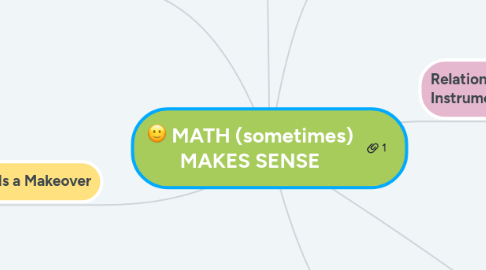MATH (sometimes) MAKES SENSE
by Jacqueline Mollica


1. Use examples and visuals
2. Relational vs. Instrumental understanding
3. Strands of Math
3.1. Conceptual understanding - comprehension of mathematical concepts, operations, and relations
3.2. Procedural fluency - skill in carrying out procedures flexibly, accurately, efficiently, and appropriately
3.3. Strategic competence - ability to formulate, represent, and solve mathematical problems
3.4. Adaptive reasoning - capacity for logical thought, reflection, explanation, and justification
3.5. Productive disposition - habitual inclination to see mathematics as sensible, useful, and worthwhile, coupled with a belief in diligence and one’s own efficacy
4. Relational Understand and Instrumental Understanding
4.1. Instrumental - knowing and applying the rule
4.1.1. 3 Main Advantages:
4.1.1.1. Easier to understand
4.1.1.2. Positive results are instantaneous
4.1.1.3. Correct answers can be obtained very quickly and consistently
4.2. Rational - knowing and applying the rule while also being able to know why a rule works and connect one rule with another
4.2.1. Relational is much more extensive
5. Dan Meyer: Math Class Needs a Makeover
5.1. Education system is failing our kids when it comes to mathematics
5.1.1. Explains and demonstrates how confusing and manipulative textbook questions are today; they aren’t engaging students at all
5.2. 5 key aspects that needed to be included in the math curriculum:
5.3. 1. Use multimedia
5.4. 2. Encourage student intuition
5.5. 3. Ask the shortest question you can
5.6. 4. Let students build the problem
5.7. 5. Be less helpful
6. Arbitrary vs. Necessary math
6.1. “With doubt deviation from the norm progress is not possible”
6.1.1. Success comes from understanding
6.1.2. Have students explain their reasoning
6.1.3. Math class is also a time for talk
6.1.4. Make writing a part of math learning
6.1.5. Support learning with manipulatives
6.1.6. Confusion is part of the process
6.1.7. Encourage different ways of thinking

